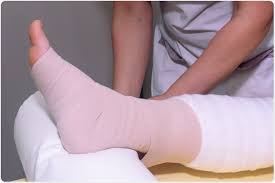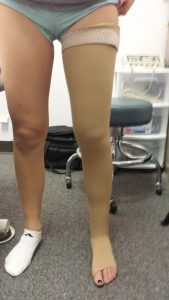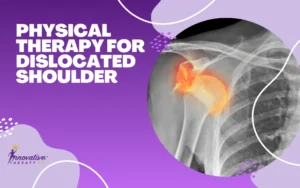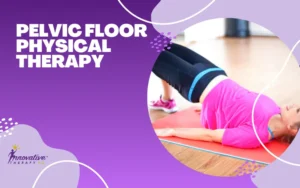Lymphedema is an issue which is anatomical, microscopic anatomy.
What does that mean? Anatomy is the structure and parts of the body. This includes the bones, muscles, tendons, ligaments and so much more. There are specific lymphatic vessels which carry fluid from the tissues back to the circulatory system of your body. Recently I was told I was too technical so let me get simple and concrete – your lymphatic system acts as the garbage collectors for your body. It picks up the large molecules, cells and particles (garbage) which are no longer useful in your tissues and around your cells. Since there is no way for the fluid and large cells to get to the dump it accumulates in the front yard – (where there is space).
When the “roads” are cut or blocked for some reason the garbage collectors can’t get the trash to the dump.
What are the 5 components of lymphedema treatment to ensure you have excellent results?
- Lymphatic drainage techniques (LDT)
 From the outside this looks like a massage but it is much more specific in pressure and direction than massage. The lymphatic vessels are stimulated to pick up the fluids, cells and large molecules from the tissues and move them through the system. There are many specific techniques, that when used in combination with the other components of complex decongestive therapy get the swelling to move through and out of the body. A well trained therapist knows both the anatomy of the lymphatic system and how to address road blocks, damns and other differences which happen as a result of trauma in the body. We are highly trained in all these aspects of working with the lymphatic system.
From the outside this looks like a massage but it is much more specific in pressure and direction than massage. The lymphatic vessels are stimulated to pick up the fluids, cells and large molecules from the tissues and move them through the system. There are many specific techniques, that when used in combination with the other components of complex decongestive therapy get the swelling to move through and out of the body. A well trained therapist knows both the anatomy of the lymphatic system and how to address road blocks, damns and other differences which happen as a result of trauma in the body. We are highly trained in all these aspects of working with the lymphatic system. - Medical Compression Wrapping
 The secret to correct medical compression wrapping is a combination between using the correct short stretch wrap and the correct application of the short stretch wrap. The short stretch wrap looks like the commonly used “Ace Bandage” but it is engineered entirely different. It contains zero elastic. The small amount of give it has compared to an elastic wrap creates waves of fluid movement in the body’s tissues. People look at the wrap and believe the wrap is acting like a trash compactor when in fact the wrap is only creating a barrier for the muscles to work against. As the muscles contract and relax waves are created in the fluid which supports the movement out of the region of swelling and into the body’s circulatory system so the fluid and large molecules can be removed. A skilled therapist must apply the correct wrap with the greatest pressure the furthest from the heart with decreasing pressure as the wrap moves towards the heart. This takes some serious skill and practice but the results are well worth the effort to find a therapist who can do this to assist your swelling resolution.
The secret to correct medical compression wrapping is a combination between using the correct short stretch wrap and the correct application of the short stretch wrap. The short stretch wrap looks like the commonly used “Ace Bandage” but it is engineered entirely different. It contains zero elastic. The small amount of give it has compared to an elastic wrap creates waves of fluid movement in the body’s tissues. People look at the wrap and believe the wrap is acting like a trash compactor when in fact the wrap is only creating a barrier for the muscles to work against. As the muscles contract and relax waves are created in the fluid which supports the movement out of the region of swelling and into the body’s circulatory system so the fluid and large molecules can be removed. A skilled therapist must apply the correct wrap with the greatest pressure the furthest from the heart with decreasing pressure as the wrap moves towards the heart. This takes some serious skill and practice but the results are well worth the effort to find a therapist who can do this to assist your swelling resolution. - Appropriate movement activities
A few people might call these activities exercises but they are not going to make you significantly flexible, strong, or give you improved endurance. The goal of these movements is to open the flaps on the lymphatic vessels and make waves. I have been accused of making waves in my life and in this case it is true. Movement is the number one supporter of lymphatic flow so the correct movements performed in the correct sequence can reduce swelling significantly. Any movement is better than no movement but the correct movements performed in the correct sequence will create huge change in your lymphatic flow and lymphedema treatment.
few people might call these activities exercises but they are not going to make you significantly flexible, strong, or give you improved endurance. The goal of these movements is to open the flaps on the lymphatic vessels and make waves. I have been accused of making waves in my life and in this case it is true. Movement is the number one supporter of lymphatic flow so the correct movements performed in the correct sequence can reduce swelling significantly. Any movement is better than no movement but the correct movements performed in the correct sequence will create huge change in your lymphatic flow and lymphedema treatment. - Skin and Person Hygiene needs to be excellent
Lymph is a high protein fluid. Bacteria and fungi love a high protein diet. The protein in the lymphatic fluid is not changed significantly by your dietary intake but keeping the skin clean, dry, supple using a low PH cream or lotion will reduce the bacteria and fungi which naturally occurs on the skin. Preventing infections and treating them immediately is crucial to support a healthy lymphatic system.  Maintenance involves self care activities
Maintenance involves self care activities
including, self lymphatic drainage techniques, daily use of compression garments appropriate for your needs and regular check ups to ensure containment of the swelling. If you live with lymphedema it is crucial you are taught daily self care skills to ensure you are keeping the swelling in check. Your therapist needs to be helping you find solutions for your daily care and maintenance. These activities can vary widely from one individual to another. It requires a creative and passionate therapist to help clients seek for the best answers for the situation at hand.





